Key Takeaways
- Silverfish feed on paper, fabrics, food, glue, and dead insects.
- They thrive in dark, humid places like basements and bathrooms.
- Reduce humidity, seal entry points, and store food securely to prevent infestations.
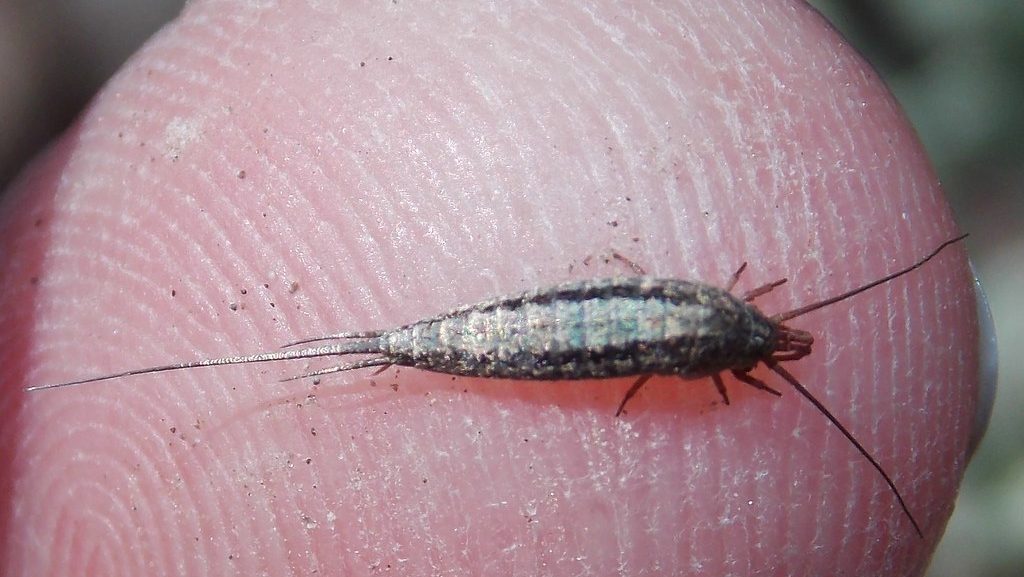 Silverfish are one of the most common household pests, known for their quick darting movements and preference for dark, humid spaces. Their diet has a key role in their ability to infest homes and damage household items like paper, books, fabrics, and even stored food. Understanding what silverfish eat can help you protect your home from infestations and avoid costly damage.
In this article, we’ll explore the diet of silverfish, common food sources, and practical steps to prevent and manage these pests in your home.
If you’re dealing with a silverfish infestation or need help preventing one, our expert pest control services are here to assist. You can schedule a free pest inspection today to get a rough estimate of your pest problems.
Silverfish are one of the most common household pests, known for their quick darting movements and preference for dark, humid spaces. Their diet has a key role in their ability to infest homes and damage household items like paper, books, fabrics, and even stored food. Understanding what silverfish eat can help you protect your home from infestations and avoid costly damage.
In this article, we’ll explore the diet of silverfish, common food sources, and practical steps to prevent and manage these pests in your home.
If you’re dealing with a silverfish infestation or need help preventing one, our expert pest control services are here to assist. You can schedule a free pest inspection today to get a rough estimate of your pest problems.
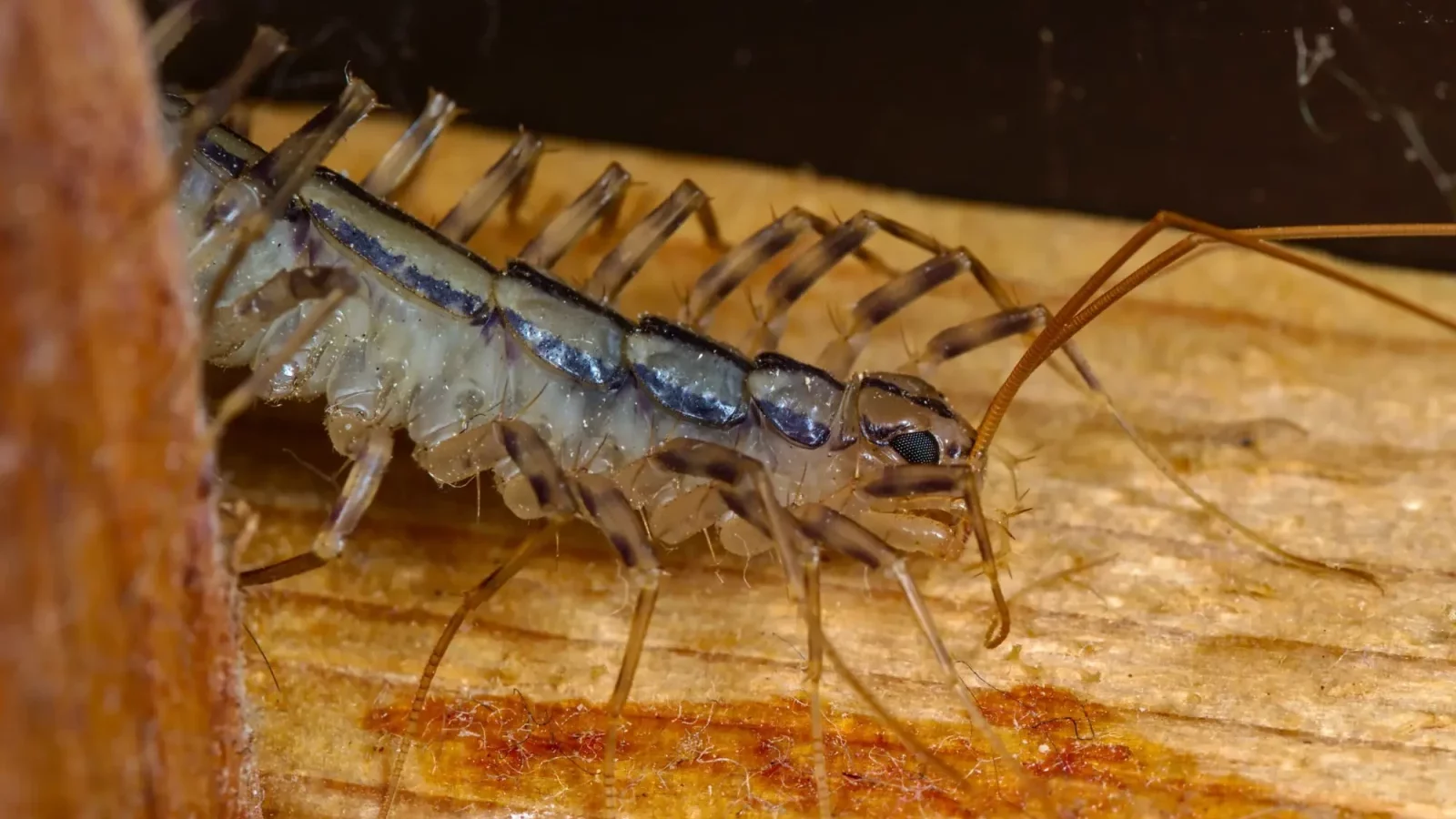

Not getting a solution?
Get your free pest control estimate today!What Do Silverfish Eat?
Silverfish are omnivorous insects, meaning they eat both plant-based and animal-based materials. Their diet is highly versatile, and they are drawn to materials that contain starches, sugars, and proteins. This is why they are often found in areas with paper, fabric, and stored food. Below are some common food sources for silverfish: Paper Products Silverfish are drawn to paper products like books, newspapers, wallpaper, and cardboard. They consume these materials because they contain starch, a key source of nutrition. The glue in bookbindings and wallpaper paste also attracts them. Signs of damage include small holes, chewed edges, and scratch-like feeding marks on paper items. Fabrics and Textiles Natural fabrics such as cotton, silk, and linen are prime targets for silverfish. These materials contain starch and proteins, which provide essential nourishment for the insects. Silverfish are especially attracted to dirty or soiled fabrics with sweat or food residues. Look for signs of damage, such as small holes, frayed fibers, and bite marks on clothing, bedding, and upholstery.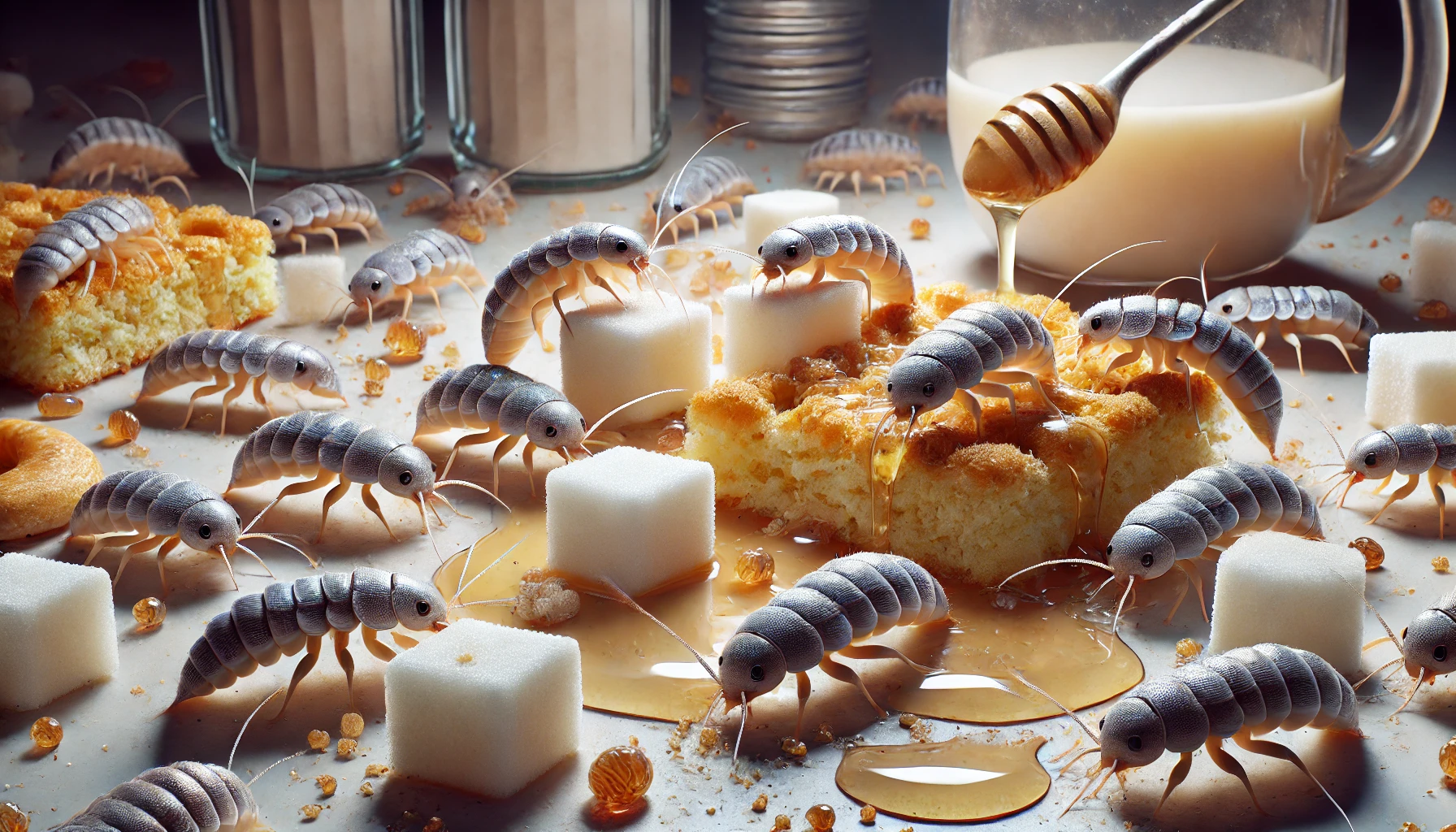 Starchy and Sugary Foods
Silverfish feed on pantry staples like dried pasta, cereal, bread, flour, and sugar. These items provide an abundant source of starch and sugar, which silverfish need for sustenance. If food is left exposed, silverfish may scavenge for crumbs or spills. Signs of their presence include bite marks and small holes in food packaging.
Adhesives and Glues
Adhesives and glues used in bookbinding, wallpaper paste, and product packaging are irresistible to silverfish. These glues contain starch and proteins, which are their prime food source. Damage from silverfish can result in peeling wallpaper, chewed book spines, and torn packaging, which are clear indicators of an infestation.
Dead Insects and Organic Matter
Although not a primary food source, silverfish will consume dead insects and organic debris when available. Dead insects provide proteins that support their growth and development. This feeding behavior is less noticeable than their activity on paper and fabrics, but you may spot silverfish near windowsills or light fixtures where dead insects tend to accumulate.
Starchy and Sugary Foods
Silverfish feed on pantry staples like dried pasta, cereal, bread, flour, and sugar. These items provide an abundant source of starch and sugar, which silverfish need for sustenance. If food is left exposed, silverfish may scavenge for crumbs or spills. Signs of their presence include bite marks and small holes in food packaging.
Adhesives and Glues
Adhesives and glues used in bookbinding, wallpaper paste, and product packaging are irresistible to silverfish. These glues contain starch and proteins, which are their prime food source. Damage from silverfish can result in peeling wallpaper, chewed book spines, and torn packaging, which are clear indicators of an infestation.
Dead Insects and Organic Matter
Although not a primary food source, silverfish will consume dead insects and organic debris when available. Dead insects provide proteins that support their growth and development. This feeding behavior is less noticeable than their activity on paper and fabrics, but you may spot silverfish near windowsills or light fixtures where dead insects tend to accumulate.
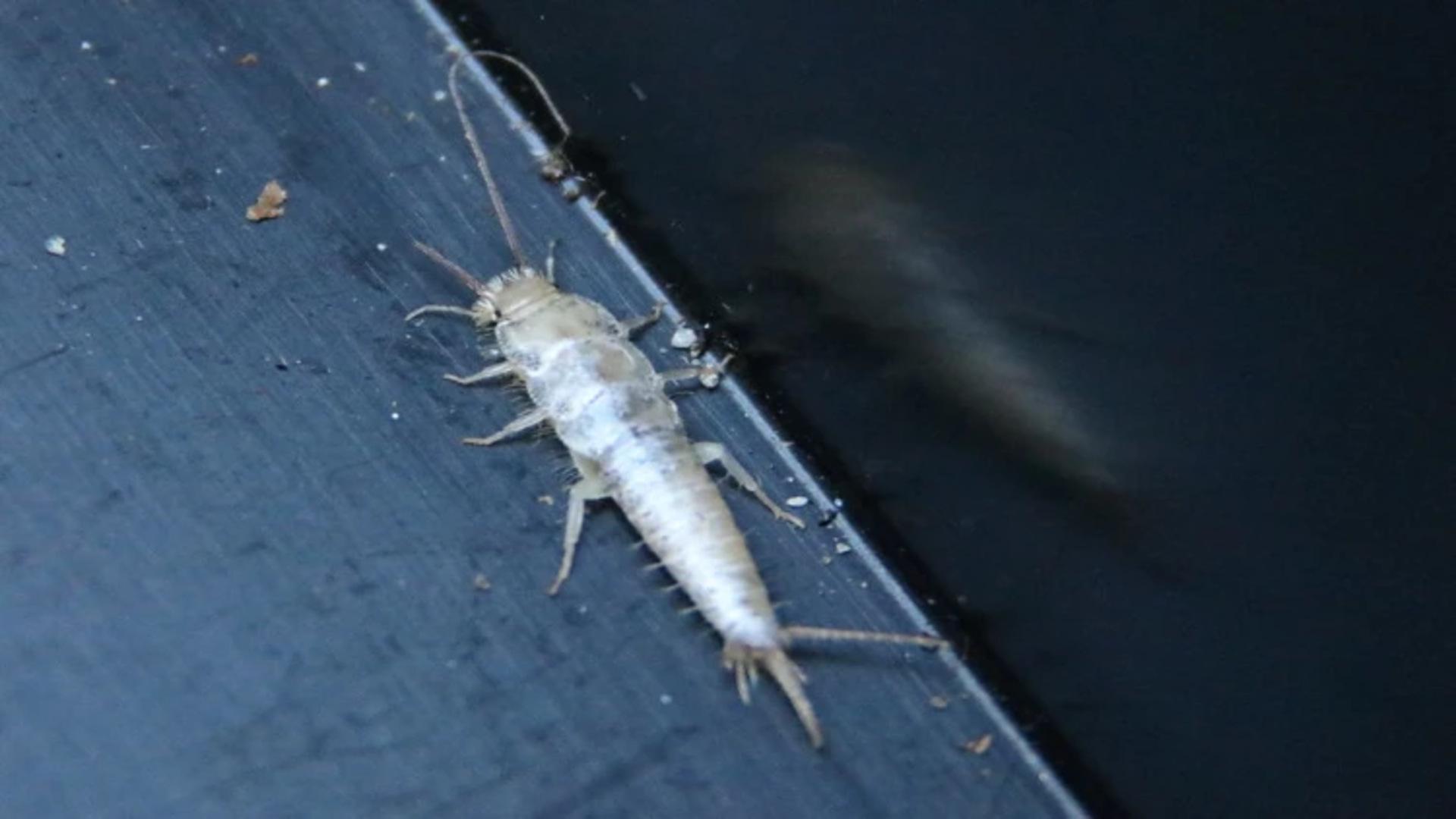
Where Do Silverfish Look For Food in Your Home?
Silverfish search for food in dark, damp areas of your home. Their flat, elongated bodies allow them to slip into small cracks and crevices, giving them access to hidden food sources. Silverfish are drawn to materials rich in starch, sugar, and protein, so, they are often found in the following places:Common Silverfish Hotspots
-
Kitchens: Unsealed pantry items, food crumbs, and spills attract silverfish looking for starchy foods.
-
Basements: Stored paper, old books, and fabric-filled storage boxes are prime feeding spots for silverfish.
-
Bathrooms: Damp towels, soap residue, and humid conditions create the perfect environment for silverfish to thrive.
-
Attics: Cluttered storage spaces with cardboard boxes, old clothes, and paper products provide ample shelter and food.
Are Silverfish Dangerous to Food?
Silverfish don’t transmit diseases or pathogens but can still damage food supplies. These pests chew through packaging, especially materials like paper, cardboard, or thin plastic, to access starchy or sugary foods. This damage can lead to food waste and contamination. Keeping food in airtight containers is a simple and effective way to prevent silverfish from invading your pantry.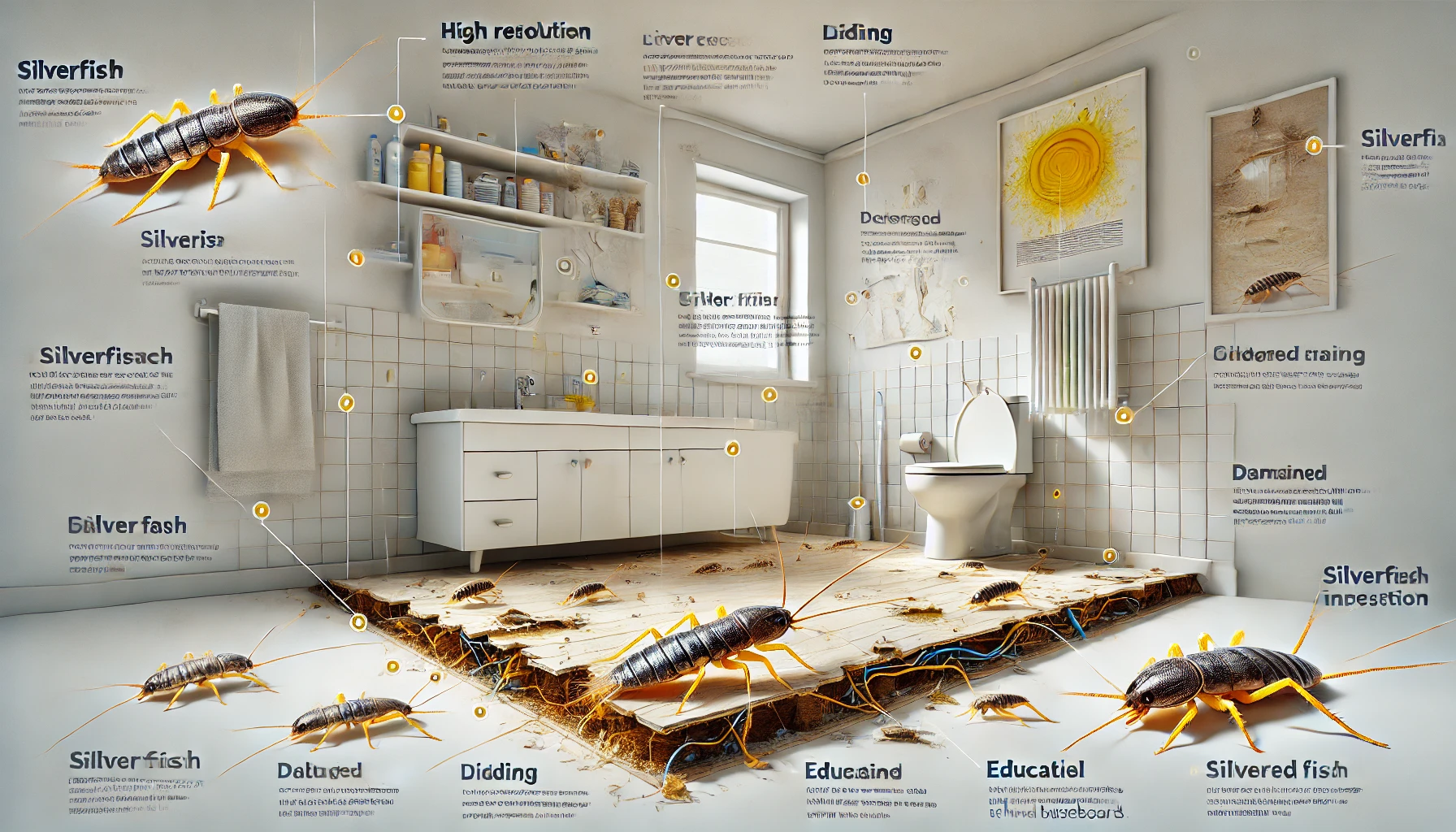
Signs of a Silverfish Infestation
- Spotting a silverfish infestation early can help you prevent damage to your belongings. Since silverfish are nocturnal and tend to hide in dark, humid areas, you may not see them during the day. However, these signs can reveal their presence:
-
Chewed or Damaged Materials: Look for irregular holes or rough, uneven feeding marks on books, papers, wallpaper, and fabrics.
-
Fecal Droppings: Silverfish leave behind small, black, pepper-like droppings near areas where they are active.
-
Shed Skins: As silverfish grow, they shed their exoskeletons, leaving behind small, silvery skins near their hiding spots.
-
Live Sightings: If you spot a silverfish darting across the floor or wall at night, it’s a clear indicator of an infestation.
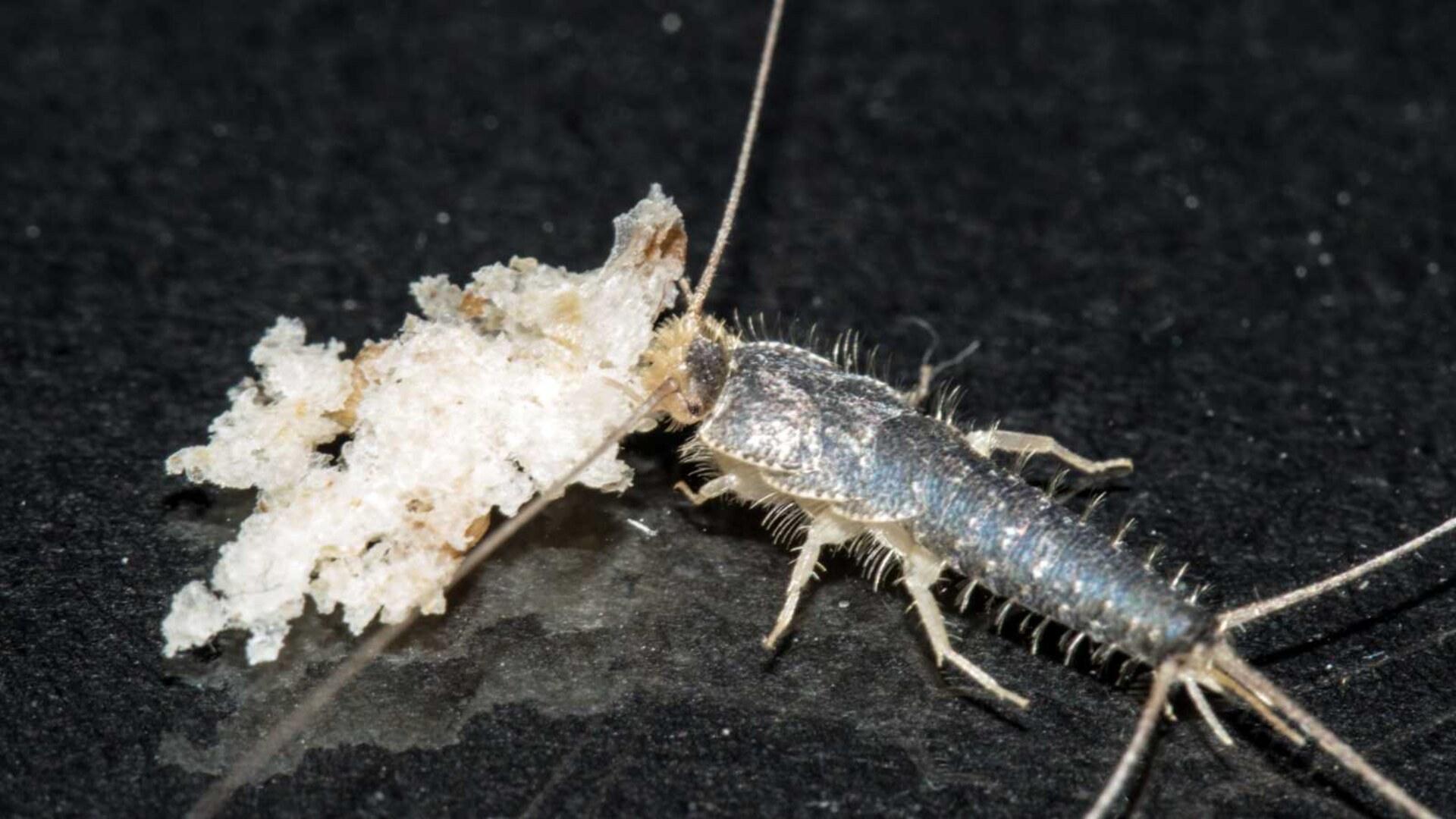
How to Prevent Silverfish Infestation?
Protecting your belongings from silverfish requires proactive measures to make your home less inviting to these pests. Here’s how you can do it:Silverfish Prevention Tips
-
Reduce humidity by using dehumidifiers in basements, attics, and bathrooms.
-
Fix leaky pipes and improve ventilation to eliminate excess moisture.
-
Seal entry points by caulking cracks, crevices, and gaps around windows, doors, and walls.
-
Store pantry items like flour, sugar, and cereal in airtight containers.
-
Clean up food crumbs and spills immediately to remove attractants.
-
Declutter and replace cardboard storage boxes with plastic containers.
-
Vacuum and dust regularly, especially in hard-to-reach areas like attics and basements.
Myths and Facts About Silverfish Diet
Silverfish are mysterious household pests that often spark misconceptions about their habits and behaviors. Understanding the truth about these insects can help you better protect your home. Here are some common myths about silverfish and the facts that debunk them:| Myth | Fact |
|---|---|
| Silverfish only eat paper. | Silverfish eat a variety of starchy materials, including textiles, glue, and fabric. |
| Silverfish are attracted to clean homes. | Silverfish are drawn to damp and cluttered areas, regardless of cleanliness. |
| Essential oils are ineffective against silverfish. | Silverfish avoid strong-smelling substances like essential oils, making them a natural repellent. |
| Silverfish will not feed on dead insects. | Silverfish can consume dead insects as part of their diet. |
| Silverfish can only survive in dark places. | While they prefer dark, damp areas, silverfish can adapt to various environments if conditions are favorable. |





